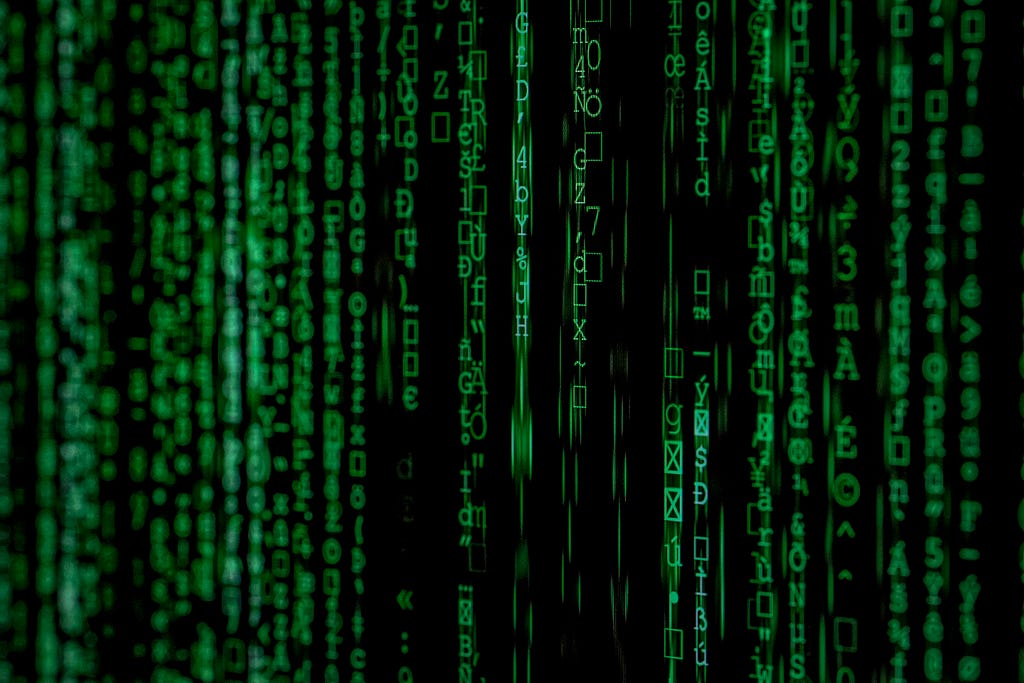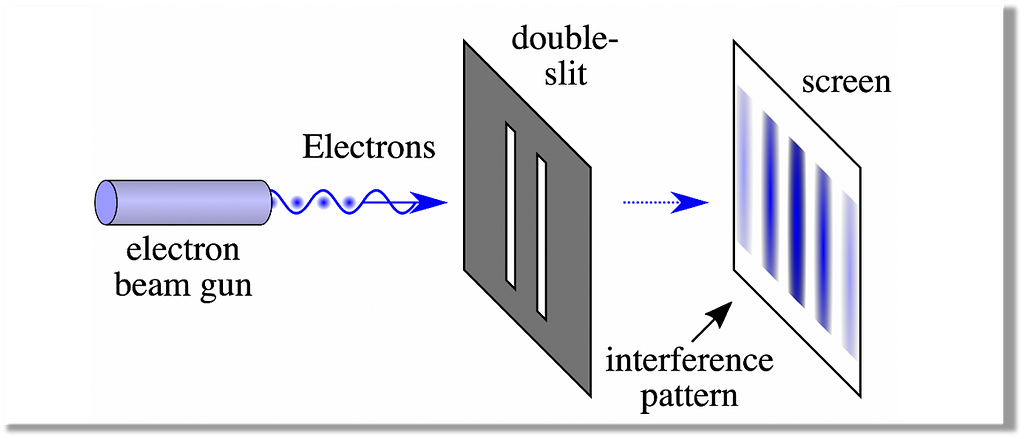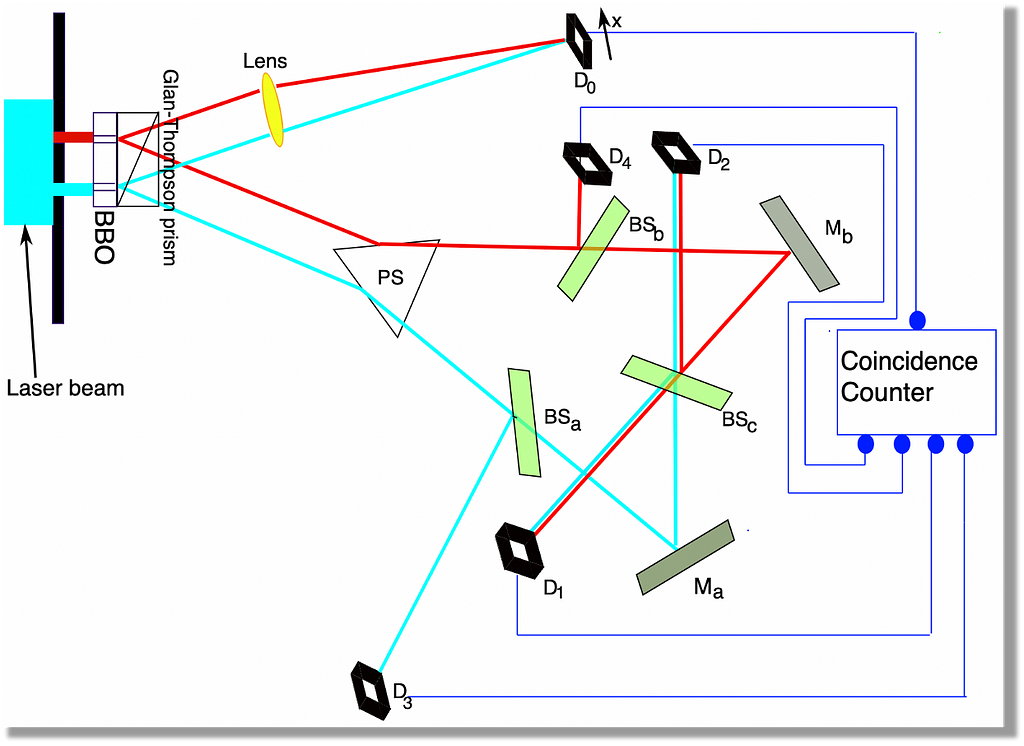https://ift.tt/MxzOh4l Quantum Mechanics and Its Implications for Reality Many-worlds (multiverse), Retro-causality (time-symmetry) and Co...
Quantum Mechanics and Its Implications for Reality
Many-worlds (multiverse), Retro-causality (time-symmetry) and Consciousness-causes-collapse

This post will touch on three unconventional implications of quantum mechanics for the nature of reality. It will provide high-level description of the quantum experiments and hypothesis that try to fit the bizarre observations at the quantum level. It is important to note that there is no consensus on the diverse interpretations with over dozen schools of thoughts by different groups of notable physicists.
There is some parallel between machine learning and efforts to figure out quantum mechanics. In machine learning, we try to build models based on available data. Similarly, physicists are trying to build a model of reality based on experimental data from both macro and quantum levels.
The three quantum interpretations covered in this post contradict the following common sense logic.
- The outcome of an event is independent of the observer
- There is only one version of events that plays out in time
- Time moves forward and past events influence the present
The interpretations can be described in the context of the following experiments.
- Double-slit experiment
- Delayed-choice quantum eraser
Double-slit experiment
This is the most popular quantum experiment and has been around for over a century. It confirms the wave-particle duality of subatomic particles and suggests measurement (observation) as a factor in the particle’s observed attributes. In the experiment, subatomic particles (e.g., photon, electron) are fired (one at a time) at a wall with two slits. When there is an observer (or measuring device) around the slits, the particle only passes through one slit at a time and we get two-stripe pattern on the detector screen, i.e., one stripe for each slit. When there is no measuring device, the electron passes through both the slits as evidenced by a visible interference pattern with multiple stripes on a detection screen on the other side of the slit as shown in figure 1.

In other words, the electron behaves like a particle (matter) when there is an observer (or observation). And it behaves like a wave and takes all possible routes (i.e., acts out all possibilities) when there is no observation or when there is no way to know the which-path (slit) the particle took. This implies the act of observation or knowing somehow influences the rendering of the particle. Subsequently, it elevates the importance of consciousness in particle events. In fact, Max Planck, one of the two founders of quantum mechanics (Niels Bohr being the other one) went as far as stating:
“I regard consciousness as fundamental. I regard matter as derivative from consciousness. We cannot get behind consciousness. Everything that we talk about, everything that we regard as existing, postulates consciousness.”
Source: https://bigthink.com/words-of-wisdom/max-planck-i-regard-consciousness-as-fundamental/
Please see my earlier post for a primer on quantum properties (e.g., superposition, entanglement, etc.) and quantum computing.
If a mere observation can collapse a superposition of possibilities into one particle possibility, then is matter really a derivative from consciousness? This interpretation has been dismissed by many for being too subjective. There is another more objective interpretation that counters the causal-observer and the collapsing wave-function claims, called the many-worlds interpretation or MWI (a branch of the multiverse hypothesis). MWI eliminates the need for the wave-function collapse and the observer with an infinite number of universes where each of the possibilities are being acted out separately.
American physicist Hugh Everett originally proposed the MWI and it has found support in many prominent physicists including Stephen Hawking, who has called it, “self-evidently correct” (source). The same article cites Everett stating:
“..all possible outcomes really do occur — but that only a single version plays out in the world we inhabit. All the other possibilities split off from us, each giving rise to its own separate world. Nothing ever goes to waste, in this view, since everything that can happen does happen in some world.”
MWI has been dismissed by some for being too hypothetical and empirically unfalsifiable.
Delayed-choice quantum eraser (DCQE)
This is a recent (1999) extension of the double-slit experiment, where things get even more weird. In DCQE, the subatomic particles coming out of the double-slit are split into entangled particles and passed/reflected through a prism (PS), beam splitters (BSₓ) and mirrors (Mₓ) as shown in figure 2. They take different routes to 5 detector screens D₀-D₄. The experiment removes the need for measuring device near the slits to eliminate the possibility of the devices interfering with the outcome.

The primary entangled particle takes the shortest path to detector D₀ and the rest of the entangled particles takes a longer path to the respective detectors D₁-D₄. The beam splitters along the longer path have a 50% chance of passing and 50% chance of reflecting the entangled particles. As you can see in the architecture in figure 2, if a particle is detected at D₃ and D₄, we know the which-path (slit) the particle took and is confirmed by two-stripe pattern. If a particle is detected at D₁ or D₂, it is not possible to know the which-path (slit) information and this too is confirmed by the interference pattern. Thus, this delayed choice of either reflecting or passing the particle by the beam splitters preserves or erases the earlier which-path (or slit) information and the matching pattern is recording at D₀, where the particle reached before reaching D₁-D₄. This implies retro-causality (time-symmetry), i.e., past event correlating to match the present event. Prominent physicists such as Richard Feynman and John Archibald Wheeler have given credibility to retro-causality by using it in their absorber theory (source). Here is a quote from Wheeler, from https://en.wikipedia.org/wiki/Wheeler%27s_delayed-choice_experiment,
“…past has no existence except as recorded in the present”, [and that the Universe does not] “exist, out there independent of all acts of observation.”
Retro-causality is controversial and majority of the physicists are skeptical about it and reject it.
Summary
Figure 3 shows the comparison of the three interpretations of quantum mechanics discussed in this post against 4 attributes.

These three interpretations are part of the dozen-plus other common interpretations of quantum mechanics. To muddy the waters even more, for over a century, scientists have not been able to reconcile the other major contradiction in physics between the general relativity (laws that govern large objects, e.g., gravity, stars, galaxies, etc.) and quantum mechanics (laws observed at the subatomic level). Hopefully, we won’t have to go through another century without a more consolidated framework that covers the theory of everything.
Resources
- https://en.wikipedia.org/wiki/Interpretations_of_quantum_mechanics
- https://en.wikipedia.org/wiki/Many-worlds_interpretation
- https://en.wikipedia.org/wiki/Multiverse
- https://en.wikipedia.org/wiki/Retrocausality
- https://en.wikipedia.org/wiki/Von_Neumann%E2%80%93Wigner_interpretation
- https://en.wikipedia.org/wiki/Double-slit_experiment
- https://en.wikipedia.org/wiki/Delayed-choice_quantum_eraser
- https://en.wikipedia.org/wiki/Wheeler%27s_delayed-choice_experiment
- https://en.wikipedia.org/wiki/Measurement_problem
- https://en.wikipedia.org/wiki/Wheeler%E2%80%93Feynman_absorber_theory
- https://bigthink.com/words-of-wisdom/max-planck-i-regard-consciousness-as-fundamental/
- https://bigthink.com/hard-science/a-new-quantum-theory-predicts-that-the-future-could-be-influencing-the-past/
- Is a time symmetric interpretation of quantum theory possible without retrocausality? — The Royal Society Publishing
- https://authors.library.caltech.edu/11095/1/WHErmp45.pdf
- https://www.nbcnews.com/mach/science/weirdest-idea-quantum-physics-catching-there-may-be-endless-worlds-ncna1068706
- https://www.sciencealert.com/quantum-physics-theory-predicts-future-might-influence-the-past-retrocausality
- https://www.theguardian.com/news/2015/nov/04/relativity-quantum-mechanics-universe-physicists
- https://en.m.wikipedia.org/wiki/Theory_of_everything
- https://plato.stanford.edu/entries/qm-retrocausality/
- https://thereader.mitpress.mit.edu/the-many-worlds-theory/
Quantum Mechanics and its Implications for Reality was originally published in Towards Data Science on Medium, where people are continuing the conversation by highlighting and responding to this story.
from Towards Data Science - Medium https://ift.tt/INy9RBM
via RiYo Analytics

No comments